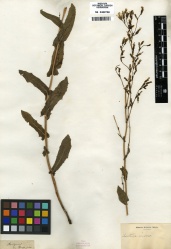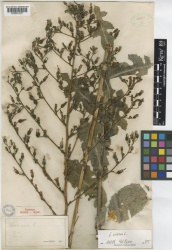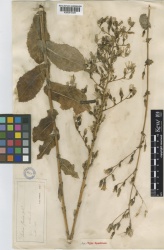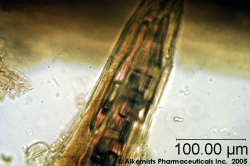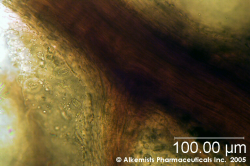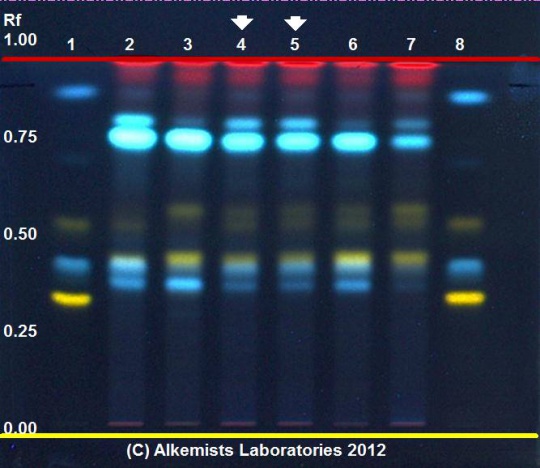Lactuca virosa (leaf)
Contents |
Nomenclature
Lactuca virosa L. Asteraceae
Standardized common name (English): wild lettuce
Botanical Voucher Specimen
 |
 |
|
|
|
|
|
Organoleptic Characteristics
|
Macroscopic Characteristics
|
Microscopic Characteristics
 |
 |
|
|
|
High Performance Thin Layer Chromatographic Identification
|
Wild Lettuce (leaf) (Lactuca virosa) Lane Assignments Lanes, from left to right (Track, Volume, Sample):
Reference materials used here have been authenticated by macroscopic, microscopic &/or TLC studies according to the reference source cited below held at Alkemists Laboratories, Costa Mesa, CA. Stationary Phase Silica gel 60, F254, 10 x 10 cm HPTLC plates Mobile Phase ethyl acetate: formic acid: glacial acetic acid: water [10/0.9/0.9/2] Sample Preparation Method 0.3g+3mL CH3OH sonicate/heat @~50° C ~ 1/2 hr Detection Method Natural Product Reagent + PEG -> UV 365 nm Reference see Lactuca_virosa_-_Alkemists_Laboratories.jpg
|
Supplementary Information
Sources
- ↑ MOBOT, Tropicos.org http://www.tropicos.org/Image/100263601
- ↑ Royal Botanic Gardens, Kew. http://specimens.kew.org/herbarium/K000815027
- ↑ Royal Botanic Gardens, Kew. http://specimens.kew.org/herbarium/K000815029
- ↑ United States Dispensatory (1918)
- ↑ United States Dispensatory (1918)
- ↑ Elan M. Sudberg, Alkemist Laboratories http://www.alkemist.com
- ↑ Elan M. Sudberg, Alkemist Laboratories http://www.alkemist.com
- ↑ Elan M. Sudberg, Alkemist Laboratories http://www.alkemist.com
